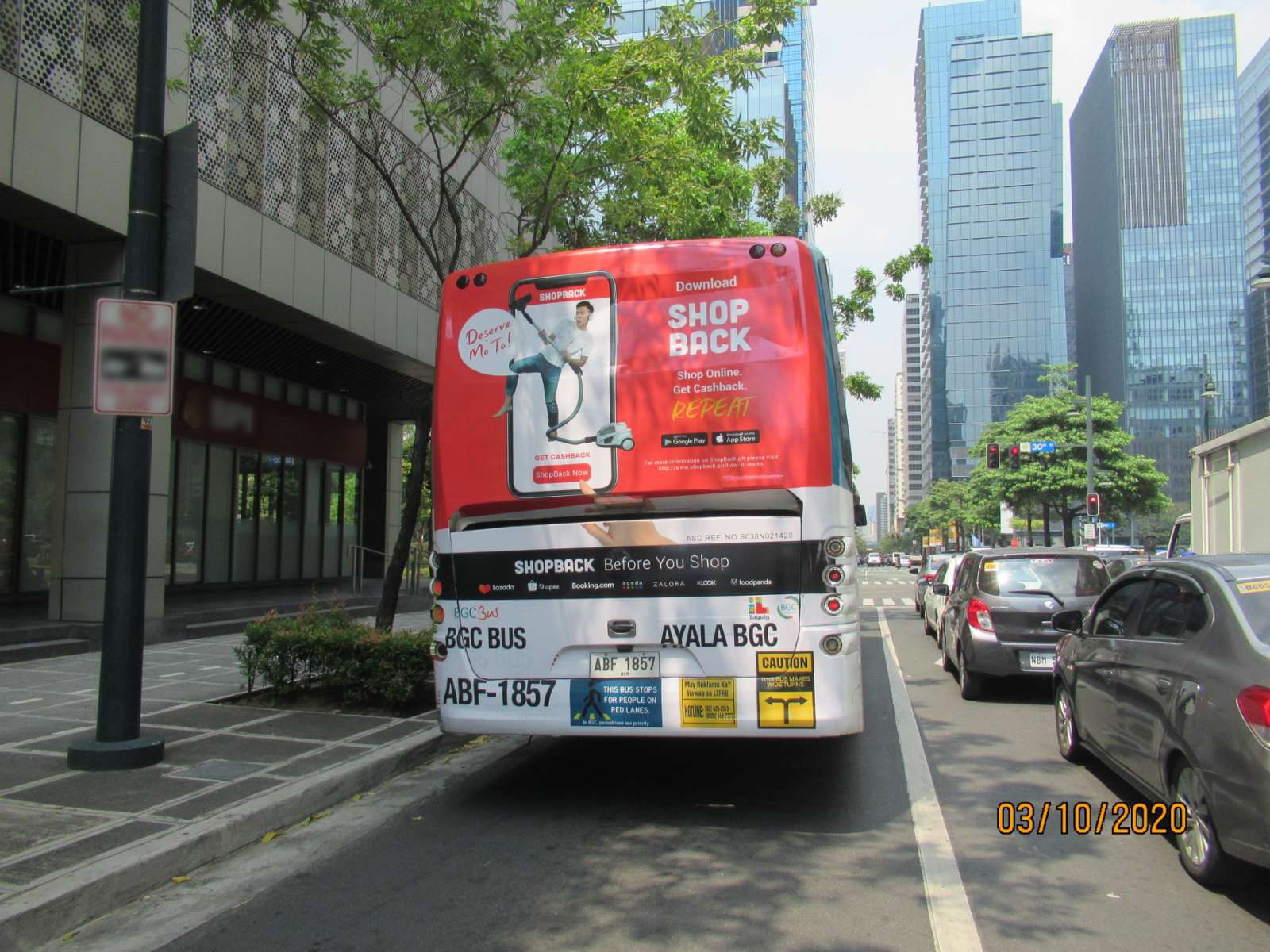Understanding the Function of Transportation Advertising in Enhancing Brand Name Presence and Consumer Engagement
Transit advertising and marketing has become a pivotal aspect in the advertising and marketing landscape, using unique chances for brand names to elevate their exposure and involve consumers properly. With the capability to get to a diverse and captive target market during their day-to-day commutes, these advertising techniques are not just about visibility; they have to do with developing meaningful connections with prospective consumers. As we discover the complex benefits and ingenious strategies within transportation advertising, it becomes necessary to take into consideration how these elements jointly affect customer perception and actions, questioning concerning their long-term effect on brand commitment.
Meaning of Transportation Advertising And Marketing
Transportation advertising and marketing refers to the practice of promoting items, solutions, or brand names with promotions placed in and around mass transit systems. This kind of advertising incorporates a range of positionings, including posters on trains and buses, digital screens at transportation terminals, and covers on the outside of lorries. It intends to reach a varied target market, profiting from the high foot web traffic connected with public transportation.
Transit advertising is purposefully placed to capture the focus of commuters, who frequently spend substantial time waiting or traveling. By integrating ads into the day-to-day routines of people, brands can develop an enduring impact and foster brand acknowledgment. The medium is specifically efficient in city atmospheres, where mass transit is a primary setting of travel.
Furthermore, transportation marketing can facilitate local targeting, enabling companies to get to particular demographics based upon transit routes and terminal locations. As city populations expand and making use of public transportation increases, this advertising and marketing method has obtained importance as an essential component of incorporated advertising and marketing methods. The vibrant nature of transportation advertising, integrated with its capacity to engage consumers in a restricted environment, highlights its relevance in modern advertising methods.
Advantages of Transportation Advertising
The effectiveness of transit marketing depends on its capacity to deliver a wide range of advantages to brand names looking for to improve presence and involvement. One of the primary advantages is the considerable reach it offers; transit ads can efficiently target varied demographics throughout metropolitan locations, getting to both pedestrians and travelers alike. This wide direct exposure significantly boosts brand name awareness.
Another benefit is the high frequency of impressions. As transit vehicles follow recognized paths and stop at multiple locations, they create recurring direct exposure that reinforces brand name messages. This regularity promotes experience, which is vital in customer decision-making.
Transit advertising is also cost-effective contrasted to various other media systems. Provided its expansive reach and capacity for high perceptions, brands frequently experience a lower price per thousand impacts (CPM), maximizing their advertising spending plan.
Moreover, transportation ads can create a feeling of neighborhood connection. By aligning with neighborhood transit systems, brands can reverberate with regional audiences and foster a feeling of regional pride. This local strategy boosts brand name commitment and engagement, making transit marketing a compelling choice for businesses intending to solidify their visibility out there.

Effective Strategies for Transportation Campaigns
To maximize the effect of transportation campaigns, brands should take advantage of strategic preparation and execution tailored to their target audience. Initially, identifying the market characteristics of the audience making use of public transit is essential. This permits brands to develop customized messaging that reverberates with possible customers.
Following, picking the ideal transit mediums is vital. Whether making use of bus wraps, train posters, or electronic displays, each medium has distinct benefits that can boost visibility. For example, vivid visuals on bus wraps can bring in interest, while digital ads can be upgraded often to reflect prompt promos.
Additionally, integrating a natural branding method across transit systems guarantees uniformity and reinforces the brand name's identity. Using memorable taglines and appealing styles will certainly enhance brand name recall amongst travelers.
Last but not least, timing is a key consider carrying out effective transportation projects. Releasing projects throughout peak travel hours or local occasions can considerably boost visibility and engagement. By utilizing these strategies, brands can effectively harness the capacity of transit marketing, cultivating higher recognition and link with their target market. Eventually, a well-executed transit campaign can drive substantial growth in brand name presence and customer interaction.

Measuring Effect and Involvement
In evaluating the efficiency of transportation ad campaign, accurate dimension of effect and involvement is find out vital for brands seeking to enhance their advertising and marketing techniques. Metrics such as reach, regularity, and impacts give fundamental information to examine exposure. Analyzing these elements assists establish the amount of potential consumers are exposed to the promotions during their everyday commutes.
Engagement can be more assessed through customer communications, such as website web traffic, social media sites states, and direct actions to calls-to-action included in the advertisements. Utilizing tools like QR codes or one-of-a-kind URLs can promote tracking of customer behavior directly linked to transportation campaigns. Surveys and comments mechanisms additionally work as important techniques to gather qualitative information on customer assumptions and recall of the ad.
Additionally, progressed analytics and attribution models can associate transportation exposure with subsequent purchasing behavior, offering understandings into the return on investment. By using a thorough method that combines measurable and qualitative actions, brand names can develop a nuanced understanding of their transit advertising influence. Eventually, this data-driven method allows brands to refine their projects, ensuring they reverberate successfully with target audiences and enhance total brand presence.
Situation Studies of Successful Projects
Successful transit marketing campaign serve as compelling examples of exactly how effective techniques can boost brand exposure and interaction. Transit Advertising Philippines. One noteworthy instance is the "I Love New York" campaign, which changed the city's picture and brought in numerous vacationers. By making use of metro advertisements, signboards, and bus covers, the campaign produced a strong, natural brand identification, leading to a considerable uptick in tourism and local organization patronage
An additional excellent campaign is Coca-Cola's "Share a Coke" campaign, which leveraged transit advertising and marketing to individualize the brand name experience. By including preferred names on advertising materials across numerous transit systems, Coca-Cola fostered a deeper emotional link with customers, motivating them to share their experiences on social networks.
In addition, the "Got Milk?" campaign successfully utilized mass transit advertisements to reach a broad target market, reinforcing the message of the significance of milk in a balanced diet. The project saw a quantifiable rise in milk usage in target demographics.
These study show that when carried out attentively, transportation advertising can substantially improve brand name exposure, foster customer involvement, and drive measurable results, showing its important role in modern-day advertising techniques. - Transit Advertising Philippines
Conclusion
In final thought, transit advertising acts as an important tool for improving brand name exposure and cultivating consumer engagement. By making use of strategically positioned advertisements within mass transit systems, brands can successfully reinforce and reach diverse audiences recognition with consistent exposure. The application of targeted messaging and cutting-edge methods even more intensifies the influence of transportation campaigns. Inevitably, the capacity to measure involvement and examine effective study highlights the efficiency of transit advertising and marketing in driving brand loyalty and consumer interactions.
Transit marketing has emerged as an essential component in the advertising landscape, providing distinct you could try here opportunities for brand browse around here names to boost their exposure and engage consumers efficiently.Additionally, transit advertising and marketing can promote localized targeting, allowing organizations to get to particular demographics based on transportation courses and station areas.In examining the efficiency of transit advertising and marketing campaigns, exact dimension of influence and interaction is crucial for brand names looking for to optimize their marketing approaches.Successful transportation advertising campaigns offer as compelling examples of just how reliable techniques can boost brand presence and involvement.In conclusion, transportation advertising offers as a crucial device for boosting brand presence and fostering consumer interaction.